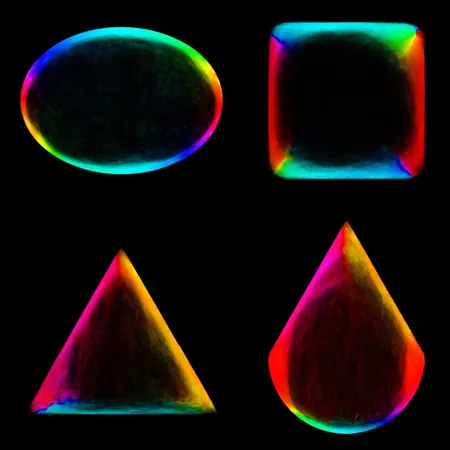
Nature's Ingenious Design: How Light Patterns Shape the World of Active Filaments
2024-11-12
Author: Wei Ling
Introduction
Scientists at the Max Planck Institute for Dynamics and Self-Organization (MPI-DS) have made groundbreaking discoveries about how living matter self-organizes into intricate structures under the influence of light. Their innovative research, published in the prestigious journal Nature Communications, reveals that when active filaments—or filamentous cyanobacteria—are exposed to localized light, they gather into stable formations along the illuminated edges.
The Behavior of Cyanobacteria
The study highlights a remarkable behavior of these microorganisms, which typically form long strands composed of numerous cells. Under optimal light conditions, they utilize photosynthesis to thrive. However, their movement is somewhat peculiar: whenever they venture away from the light, they reverse direction to re-enter these beneficial areas.
Experimental Observations
Through meticulous experimentation, MPI-DS scientists explored the collaborative dynamics of cyanobacteria. By creating various light patterns on cultures placed in Petri dishes, they observed that filament aggregation varied based on the shape of the illuminated zones. For instance, in circular light patterns, cyanobacteria predominantly congregated along the perimeter, while triangular or trapezoidal light designs prompted the formation of distinct filamental arrangements.
Emergence in Nature
Stefan Karpitschka, a leading researcher at MPI-DS and professor at the University of Konstanz, remarked on the phenomenon: 'The striking aspect is how these microorganisms elegantly align themselves along complex curves despite their linear movement ability. This is a classic example of emergence, where a higher-order structure arises from the simple behaviors of individual filaments.'
Implications for Technology
This research not only deepens our understanding of biological self-organization but also holds significant implications for technological advancements. The model developed by the researchers can be applied to other living systems that share a similar filamentous structure. Co-author Leila Abbaspour emphasized the model's universal applicability, stating, 'This collective behavior can be observed in analogous systems allowing active filaments to organize based on sensory information from their surroundings, despite their one-dimensional movement.'
Future Applications
The potential applications of these insights extend to the development of 'smart textiles' and innovative materials. By leveraging mechanisms of self-assembly, the findings could lead to the creation of adaptive fabrics and structures that respond dynamically to environmental stimuli. Imagine clothing that can adjust its properties based on temperature or light exposure, or materials that morph in response to their surroundings—a tantalizing glimpse into the future of technology driven by nature's own ingenious designs.
Conclusion
This research showcases the relationship between biology and innovation, opening up exciting pathways for material science and sustainable technologies. As we continue to unlock the secrets of nature, who knows what other transformative ideas lie hidden within the intricate patterns of life?



 Brasil (PT)
Brasil (PT)
 Canada (EN)
Canada (EN)
 Chile (ES)
Chile (ES)
 España (ES)
España (ES)
 France (FR)
France (FR)
 Hong Kong (EN)
Hong Kong (EN)
 Italia (IT)
Italia (IT)
 日本 (JA)
日本 (JA)
 Magyarország (HU)
Magyarország (HU)
 Norge (NO)
Norge (NO)
 Polska (PL)
Polska (PL)
 Schweiz (DE)
Schweiz (DE)
 Singapore (EN)
Singapore (EN)
 Sverige (SV)
Sverige (SV)
 Suomi (FI)
Suomi (FI)
 Türkiye (TR)
Türkiye (TR)